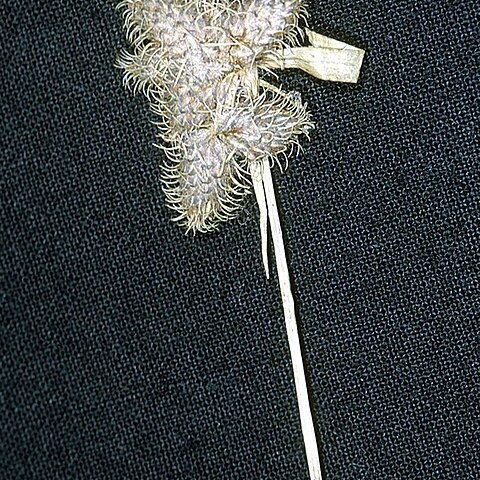Herbs, annual or perennial, cespitose or not, rhizomatous or not, variously pubescent. Culms solitary or not, 3–5-angled in cross section. Leaves all cauline, polystichous, usually hairy, hair sometimes confined to junction of blade and sheath; sheaths closed, tubular; ligules tubular, scarious; blades sometimes absent or reduced to mucro or cusp, flat, or those mid culm strongly formed. Inflorescences of spikelets sessile in clusters of 2–5 (rarely solitary), the clusters sessile or pedunculate and terminal or racemose; spikelets to 150. Spikelets: scales 20–50, spirally arranged, proximal 1–2 scales empty, others subtending flower, some distal scales empty. Flowers bisexual; perianth (3–)6 in sets of 3, outer set of stout, sharp bristles shorter than inner set of stipitate-bladed, spatulate scales, rarely inner set forked or pinnately lobed; stamens 1–3(–6), long-exserted; styles linear, 3-fid, articulate well distal to base, base usually persistent. Achenes trigonous-rhomboid.
Herbs, perennial or annual, sometimes with a creeping rhizome. Culms tufted or solitary, usually pubescent, nodose. Leaves mostly cauline, pubescent or glabrous; sheath usually completely surrounding culm; ligule tubular, hyaline; leaf blade usually elongate, linear to lanceolate. Involucral bracts leaflike, sheathing at base. Inflorescences paniculiform, with few to many glomerulate clusters or sessile spikelets at few to several nodes. Spikelets ovoid to ellipsoid, terete, many flowered, usually pubescent. Glumes spirally imbricately arranged, obovate, broadly elliptic, or oblong, each subtending a bisexual flower but basal 1 or 2 empty, apex obtuse and awned. Perianth bristles 3 or 6, 3 outer ones needlelike (sometimes reduced or absent), 3 inner ones squamellate and alternate with outer whorl. Stamens 3. Style not or hardly dilated at base, continuous with ovary, glabrous; stigmas 3. Nutlet ± stipitate, obovoid to ovoid, 3-sided, ± smooth or tuberculate.
Scales numerous, spirally arranged, usually hairy, with an often spreading or recurved awn or mucro, the lowest 1–3 empty; fls perfect, with 1–3 stamens and trifid style; ovary subtended by 3 bristles alternating with 3 perianth-scales (“petals”), the latter long-stipitate, with expanded blade, often awned; achenes trigonous, long-stipitate, beaked-apiculate; leafy-stemmed sedges with strongly veined sheaths, ours with a few spikelets in a terminal head subtended by 2 or 3 ± foliaceous bracts, often with some additional pedunculate axillary clusters. 30, warm reg.
Plants perennial, with leafy triangular culms; spikelets many-flowered, terete, in terminal and axillary clusters, or solitary; scales spirally imbricate, awned, the lowest 1 or 2 usually empty; flowers perfect; perianth of 6 bristles (scales), frequently thickened and sometimes becoming ovate; stamens 3; style 3-cleft, deciduous; achenes 3-angulate, smooth, stipitate or sessile.

